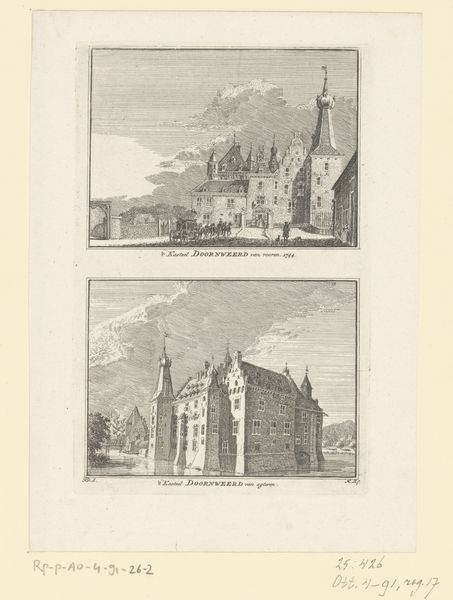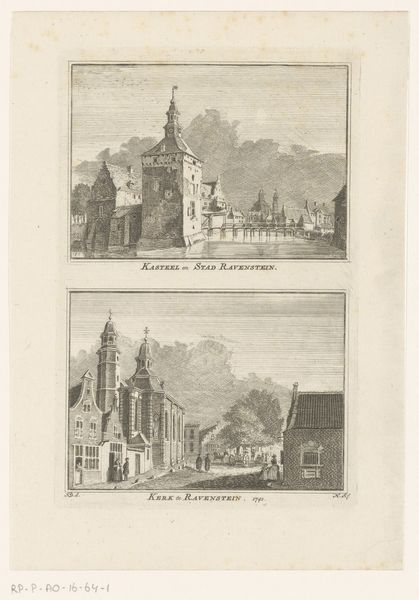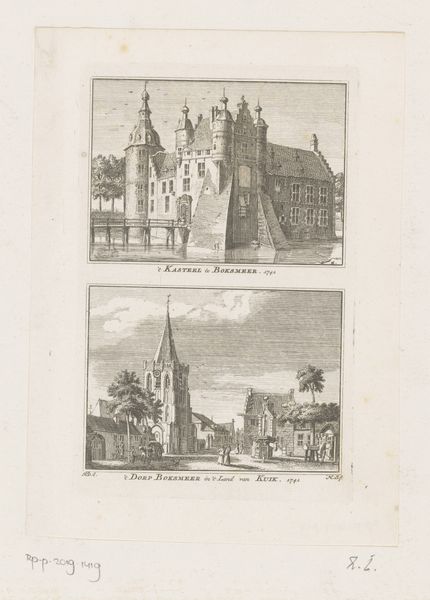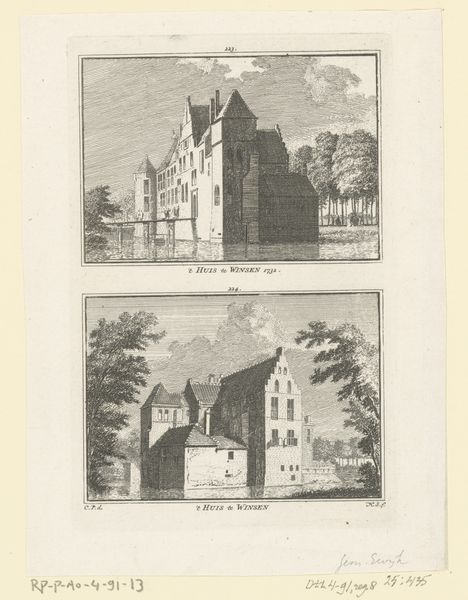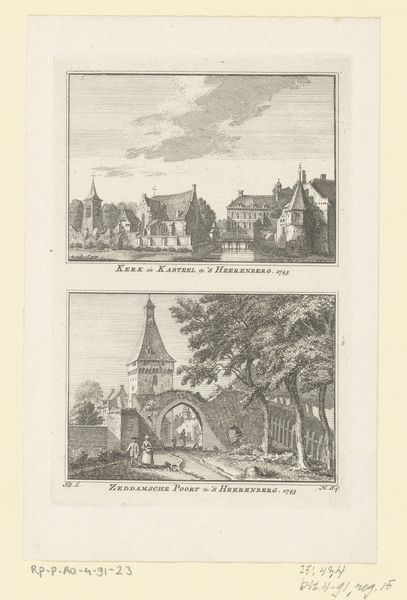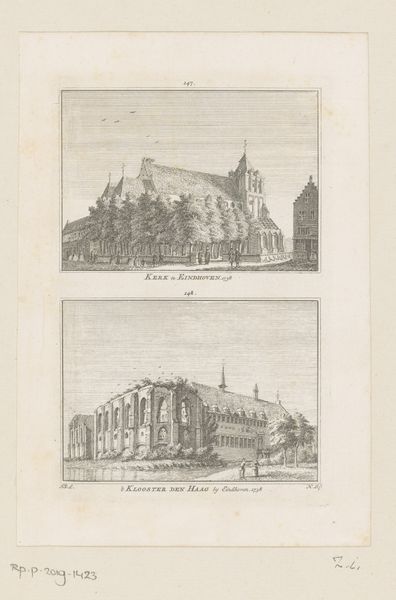
Dimensions: height 167 mm, width 110 mm
Copyright: Rijks Museum: Open Domain
Editor: This print, "Twee gezichten op kasteel De Cannenburgh" by Hendrik Spilman, probably made between 1750 and 1792, depicts two views of the same castle. I'm struck by how different the perspectives are; one is quite grounded, the other almost seems to celebrate the castle's grandeur. What symbolic weight do you think Spilman gives to architecture in this piece? Curator: Architecture is indeed heavy with symbolism. Here, the two depictions function almost as memory and aspiration. The lower view, more formal and imposing, aligns with how the castle *wants* to be seen: a symbol of power and permanence. Do you notice how it's framed by water, creating a sense of separation and majesty? Editor: Yes, it definitely feels more staged, almost theatrical. And the top view? Curator: The upper view presents a more lived-in reality. The figures walking in the foreground humanize the scene, placing the castle within the everyday. The memory of the castle perhaps. It reminds us that buildings aren't just stone; they're stages for human activity, vessels of collective experience. Spilman seems to be acknowledging both the ideal and the reality, the symbol and the substance. How does this "double vision" affect your interpretation of the image? Editor: That’s insightful! It makes me consider the role of landscape in shaping identity and history. It's not just about architectural style, but about the relationship between people, place, and time. Thank you! Curator: A pleasure. Always look closely for the story woven into the image; it reflects not just the artist, but the culture from which it springs.
Comments
No comments
Be the first to comment and join the conversation on the ultimate creative platform.

